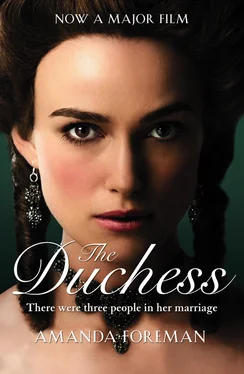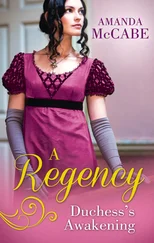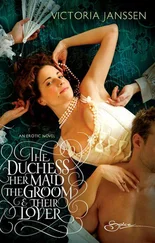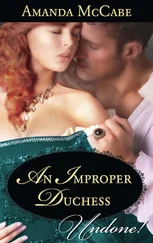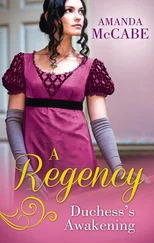1 ...8 9 10 12 13 14 ...34 They left Chatsworth in January, much to Georgiana’s relief. In London she would be surrounded by her own family and friends and no longer reliant on the monosyllabic Duke or his critical relations. The caravan of carriages and coaches, piled high with boxes of plate and linens, set off once more. Most of the servants joined the back of the train to take up their duties at Devonshire House, leaving behind a skeleton staff until the family’s return in the summer.
Devonshire House lay in London’s western end, known as the ‘polite’ end, encompassing Piccadilly, St James’s and Hyde Park. Before the eighteenth century the grand nobility lived in private palaces along the Strand, overlooking the river Thames, but after the Glorious Revolution the nature of political life changed. Parliament no longer met at the King’s command but according to a set calendar, while the court resided permanently at St James’s Palace when parliament was in session. The aristocracy had to be in London for much longer periods of time, and in a location convenient for both Westminster and St James’s. The concentration of so much wealth and power transformed the city. By the mid-eighteenth century one in ten Englishmen had lived in London at some point in his life. There was a frenzy of building as the capital spread out westwards. Speculators widened country lanes into streets, turned fields into smart squares, and built shops, arcades and churches on previously empty spaces. By the 1770s modern London was envied throughout Europe for its glass-fronted shops and spacious roads that easily accommodated two lanes of traffic.
The aristocratic ‘season’ came into existence not only to further the marriage market but to entertain the upper classes while they carried out their political duties. The season followed the rhythm of parliament: it began in late October with the opening of the new session, and ended in June with the summer recess. The two most popular nights of the week were Wednesday and Saturday, when parliament was not in session and the men’s attendance could be assured. A completely new form of public architecture appeared, the sole purpose of which was to facilitate social intercourse. Coffee houses – where men of all classes gathered during the day to read newspapers and discuss politics – sprang up. White’s, the first of the London clubs, opened in St James’s in 1697; Almack’s, Boodles and Brooks’s followed half a century later. For evening entertainment people went to Covent Garden or to the Italian Opera House in the Haymarket to hear Handel, or to Drury Lane to watch David Garrick. Afterwards they could pay 2 s 6 d to enter Ranelagh, or visit the riverside gardens at Vauxhall to dance at a masquerade, attend a concert, or watch the fireworks.
Baron Archenholtz came to London at this time and was amazed by the difference between the east and the west, the old and the new. East was the City, home of the country’s banking, insurance and commercial institutions. It retained a medieval feel with its tiny slipways and hidden courtyards. Further east were the manufacturing districts, where artisans laboured in run-down workshops without heat or ventilation to produce luxury goods to be sold in the West End – jewellery, clocks, saddles, furniture and cutlery. Further east still were the Spitalfields silk-weavers, the soap-making factories, tanneries and the slum-dwellings of the marginal poor. ‘The East end,’ Archenholtz wrote, ‘especially along the shores of the Thames, consists of old houses, the streets there are narrow, dark and ill-paved; inhabited by sailors and other workmen who are employed in the construction of ships and by a great part of the Jews.
‘The contrast between this and the West end,’ Archenholtz continued, ‘is astonishing: the houses here are mostly new and elegant; the squares superb, the streets straight and open … If all London were as well built, there would be nothing to compare it with.’ 23 Another visitor commented on how ‘pure air circulates in the new streets [compared to the fetid stench in the alleyways behind Westminster]; and the squares are carefully planned, and pleasing to the eye; the upper-class society who live there find these squares salubrious since within each of them is a magnificent garden; the surrounding houses are tall with plenty of big windows … admirable pavements very wide protect the passers-by from carriages and carts.’ 24 New lighting systems were being introduced and stucco was being applied to the front of buildings: they ‘lifted’ the city from under the thick fog of coal dust ‘which envelops London like a mantle; a cloud which the sun pervades rarely’.
Situated opposite what is now the Ritz Hotel, Devonshire House commanded magnificent views over Green Park. The original house had burnt down in 1733 and the third Duke of Devonshire commissioned William Kent to rebuild it. Aesthetically it was a failure. The house was stark and devoid of architectural detail; the bottom windows were too large, the top windows too small. The whole building was enclosed behind a brick wall which hid the ground floor from view and made the street unattractive to passers-by. The London topographer, James Ralph, wrote, ‘It is spacious, and so are the East India Company’s warehouses; and both are equally deserving of praise.’ 25 As well as attracting every graffiti writer within two miles, the brick wall ruined the architectural line of Piccadilly. One contemporary complained: ‘The Duke of Devonshire’s is one of those which present a horrid blank of wall, cheerless and unsociable by day, and terrible by night. Would it be credible that any man of taste, fashion, and figure would prefer the solitary grandeur of enclosing himself in a jail, to the enjoyment of the first view in Britain, which he might possess by throwing down this execrable brick screen?’ 26
The chief attraction of Devonshire House was the public rooms, which were larger and more ornate than almost anything to be seen in London. A crowd of 1,200 could easily sweep through the house during a ball, a remarkable contrast to some great houses where the crush could lift a person off his feet and carry him from room to room. Guests entered the house by an outer staircase which took them directly to the first floor. Inside was a hall two storeys high – flanked on either side by two drawing rooms of identical size. Beyond the hall was another, even larger drawing room, several anterooms and the dining room. Some of the finest paintings in England adorned the walls, including Rembrandt’s Old Man in Turkish Dress , and Poussin’s Et in Arcadia Ego.
Georgiana and the Duke were naturally placed to become the leaders of society’s most select group, known as the ton or ‘the World’ – the ultra-fashionable people who decided whether a play was a success, an artist a genius, or what colour would be ‘in’ that season. Henry Fielding was only half-joking when he said that ‘Nobody’ was ‘all the people in Great Britain, except about 1200’. 27 The ton certainly believed this to be the case. The writer and reluctant courtier Fanny Burney made fun of its self-absorption in Cecilia : ‘Why, he’s the very head of the ton,’ Miss Larolles says of Mr Matthews. ‘There’s nothing in the world so fashionable as taking no notice of things, and never seeing people, and saying nothing at all, and never hearing a word, and not knowing one’s own acquaintance, and always finding fault; all the ton do so.’
The social tyrants who made up the ton also considered it deeply unfashionable for a wife and husband to be seen too much in each other’s company. The Duke escorted Georgiana to the opera once and then resumed his habit of visiting Brooks’s, where he always ordered the same supper – a broiled blade-bone of mutton – and played cards until five or six in the morning. 28 Occasionally they went to a party together but Georgiana was expected to make her own social arrangements. There was no shortage of invitations and she accepted everything – routs, assemblies, card parties, promenades in the park – in an effort to avoid sitting alone in Devonshire House.
Читать дальше
